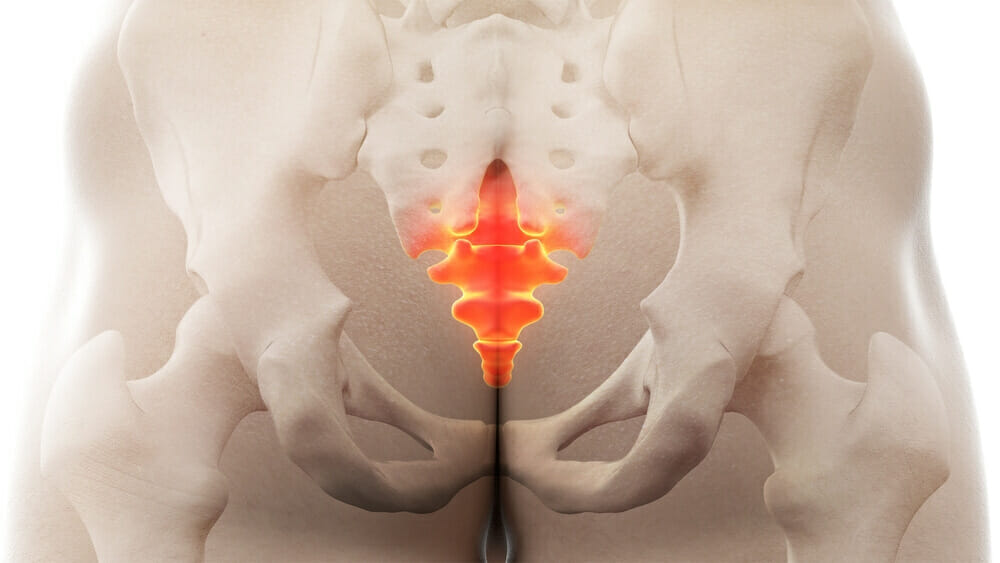
There’s nothing worse than waking up at 3am with a dull yet unshakable pain in your tailbone. While coccyx pain can be debilitating as ever during the day by making daily activities uncomfortable, coccyx pain can also flare up at night, causing sleeplessness, piercing aches and pains – often leaving you even more exhausted during the day.
If you’re reading this, you’re probably after some reprieve from the aches and pains keeping you up at night.
You may benefit from seeking treatment from a physio for coccyx pain in Perth if pain persists. In the meantime, here’s how to sleep with coccyx pain and ways to ease the worst symptoms.
What Causes Coccyx/Tailbone Pain?
There can be any number of causes behind coccyx pain. Sometimes a combination of factors can be to blame. As you will see below, anyone can suffer from these unfortunate aches and pains. Here are the most common causes behind coccyx pain.
1. Slip And Fall Accidents
We’ve all done this at some point – whether it’s on a slippery bathroom floor, a bike accident, or leaning too far back on a chair, there are countless ways of falling on our backsides. This often results in the cluster of bones at the lower end of the spine becoming bruised or, in worse cases, broken or fractured.
2. Repetitive Strain Injury Or RSI
Sports or activities that require you to lean back and forth repetitively, like rowing or cycling, can strain the tissue around the tailbone and result in injury to the coccyx.
3. Weight Gain
Obesity and weight gain can often be linked to coccyx issues. As you gain weight, more pressure is applied to the tailbone which can shift its place and cause pain in the process.
4. Pregnancy
Throughout the third trimester, the female body releases hormones that softens the bones between the coccyx and the sacrum to naturally allow for smoother childbirth. Normally, this is a natural process. But sometimes, it can result in the bones and ligaments stretching too far and giving way to aches and pains.
5. Anorexia
Being underweight also causes problems for the coccyx. With a lack of body fat around the lower spine and buttocks, the coccyx is more exposed to rubbing up against ligaments and tendons. This can inflame tissue and cause pain in the tailbone.
Symptoms Of Coccyx/Tailbone Pain

Coccyx pain is easily recognisable as it’s often concentrated around the tailbone area. It can flare up when doing activities that involve sitting, or repetitive pulling or pushing.
Here are some of the more common symptoms to watch out for:
- Pain after prolonged periods of sitting or standing
- Aches and pains emanating from the tailbone
- Pain when you sit down or stand up
- Pain during bowel movements
- Pain during sexual intercourse
Best Sleeping Positions For Tailbone Pain

Going to bed at night with coccyx pain can be a tough task. Knowing how to sleep with coccyx pain depends largely on how you sleep. You may find that some sleeping positions help with easing the pain, while others just make it worse. Here are some ways to promote good sleeping habits when it comes to bedtime.
1. Try Sleeping On Your Side With A Pillow Between Your Legs
This is a common technique that can work to ease the pressure on your lower back and tailbone. The pillow can help better align your hips – meaning there is less stress on your hip bones during the night.
2. Make Sure You’re Using The Right Pillow
A pillow that’s too soft or not voluminous enough can fail to align your neck with the rest of your back and spine – causing further strain to your tailbone. Never underestimate a pillow with the right firmness and thickness.
3. Give Sleeping On Your Back A Chance
Sleeping on your back is the preferred position when it comes to reducing stress on your coccyx. Even better – try placing a wedge pillow under your knees as you lie on your back. This can help to further relieve stress on your tailbone and allow your coccyx to relax into the bed.
4. Avoid Sleeping On Your Stomach
No amount of wedge pillows can make sleeping on your stomach a good idea. This is because when you lie on your stomach, a good deal of your body weight is drawn to the centre, putting excess pressure on your lower back and coccyx. Sleeping on your stomach also means you’re twisting the top of your spine as you turn your head to one side to breathe. Not so much of a problem if you have a healthy neck, but it’s one to avoid if you don’t.
Other Ways To Help Ease Tailbone Pain
Finding the right sleeping position is a great help for anyone suffering from coccyx pain. But it’s not the only solution you can follow up on. There are plenty of other ways you can tackle tailbone pain like:
- Using a heat pack to relieve swelling and relax muscles
- Drinking warm and relaxing tea before sleep
- Using a coccyx cushion to relieve pain throughout the day
Can Sleeping Position CAUSE Tailbone Pain?
Our sleeping posture is rarely the root cause of tailbone pain. However, sleeping on your stomach or observing unhealthy sleeping habits can worsen an existing problem. Keeping a healthy sleeping routine, and ensuring you have the right bedding is key to minimising the impact of tailbone pain.
How Do I Know If My Tailbone Pain Is Serious?
Mild and temporary tailbone pain should always be treated with caution. Visiting a physio for coccyx pain is a good idea if you begin to feel pain and aren’t sure how to sleep with coccyx pain. Extreme pain following an accident should be treated as serious and attended to immediately. Longer-term pains lasting over several weeks should also be treated as serious.
What Should You NOT Do If Your Tailbone Hurts?
Try not to engage in any repetitive or strenuous physical activity and avoid sitting on hard surfaces and for prolonged periods. Also, try to prevent constipation and avoid sleeping on your stomach as this can increase the pressure on your tailbone.
Is Walking Good For Tailbone Injury?
Yes. Try to keep active and reduce the amount of time you spend seated. Taking a walk during the day can help relieve tension on your lower spine, legs and feet and promote a healthier lifestyle more generally.
Need Some Extra Help?
Can’t seem to shake the pain? Want to learn more about how to sleep with coccyx pain?
Here at Integrity Physio Como we know how debilitating tailbone pain can be. Whether you’re a parent, working full time, or both, we’re here to help you get the relief and advice you need. Simply reach out to our expert team who are waiting to assist you.

